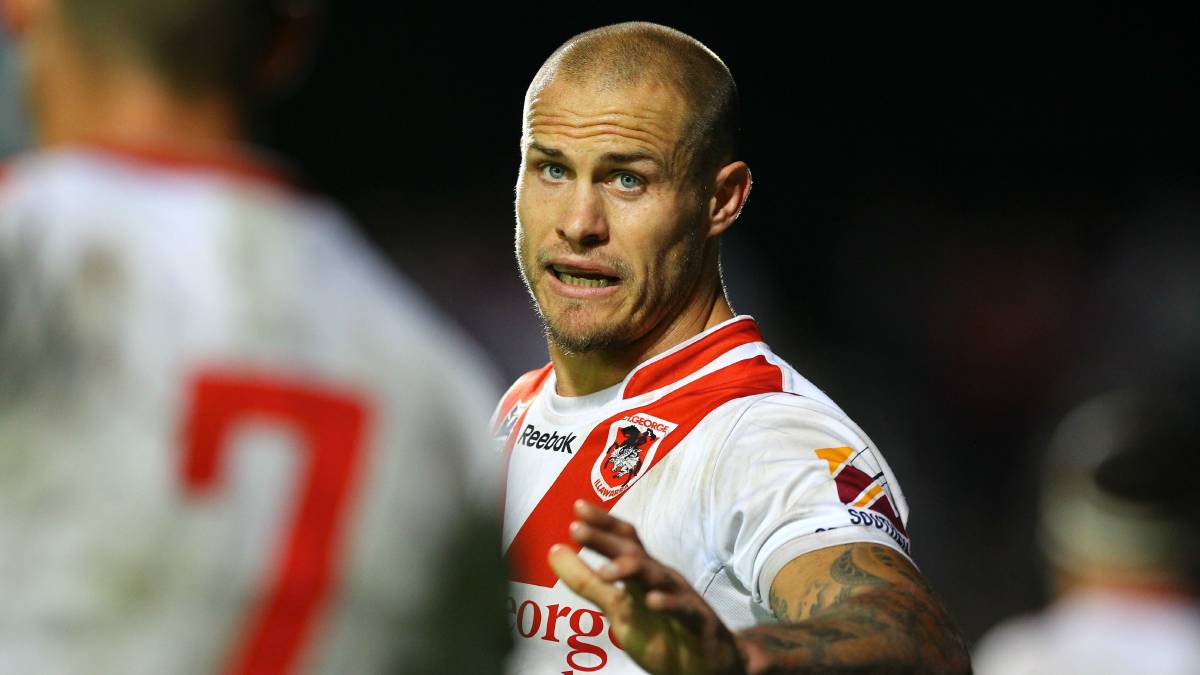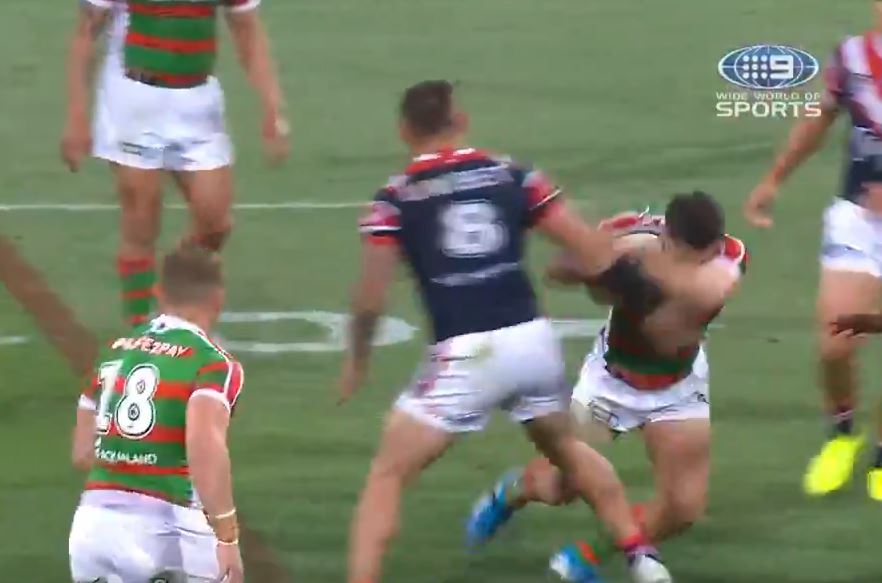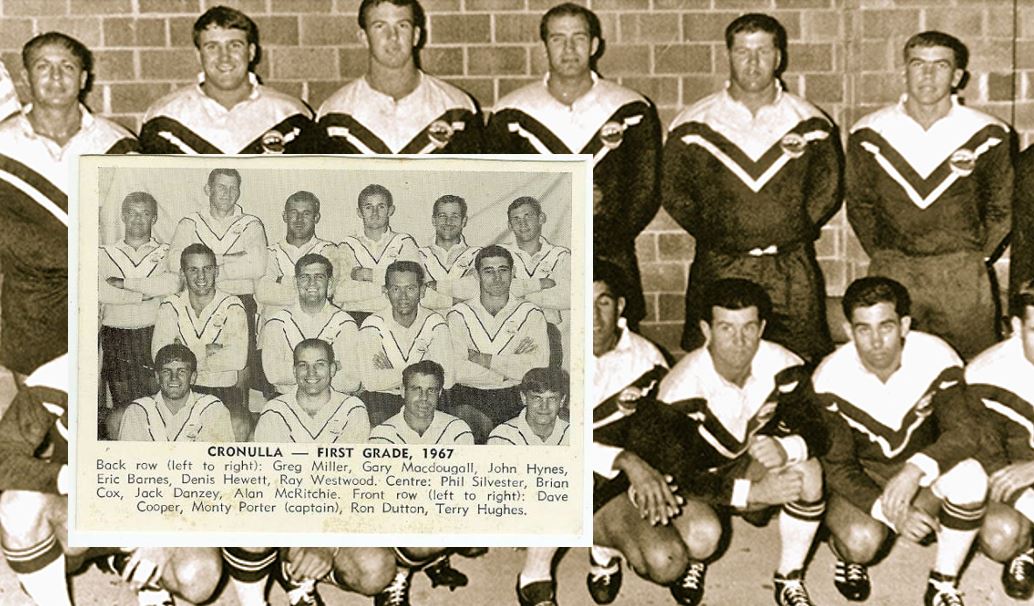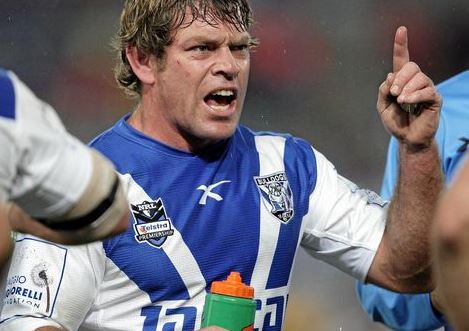BY CURTIS WOODWARD
In a year of truly unbelievable off-field NRL stories, Matt Cooper’s painkiller addiction admission has to be commended. He came forward, put himself in hospital, scared for his life and his young family he would leave behind.
Here is Cooper. A former Australian and State of Origin centre, a premiership-winning great of the St George Illawarra Dragons. A man who walked into the unknown of retirement with the lifelong burden of injuries sustained on the footy field.
Rugby league is unforgiving, it’s a weekly war on yourself, your body and the opponent in front of you. Unless you can’t walk, your coach expects you to play through the pain.
And then boom, it’s all over. Career finished and into society you go. God knows how many retired players live with the pain. Before you know it, you’re Matt Cooper. Laying on your daughter’s bedroom floor crying because you don’t know if you’ll wake up in the morning.
Painkillers, like the name suggests, kills.
It numbs your pain but as your body adjusts, you need more to numb it again.
If Cooper didn’t walk into that hospital, he could have joined the likes of Bruce Lee and Elvis Presley as victims of the prescription drug.
“It was a cocktail of prescription meds, painkillers,” Cooper told News Corp.
“I was like, ‘I’m taking too many pills here.’ There were times there I was like, ‘I’m not going to wake up.’
“I Googled how people die from this drug and they just stop breathing. That is when I realised I had to tell my wife. You can only hold a secret for so long and I was just getting tired.
“The night before I went in, I was sitting on the floor of my daughter’s bedroom holding her hand for an hour just crying because I thought tonight is the night I am not going to wake up.”
@mattcooper44 speaking so honestly about an #Endone addiction, brings to light a deeper issue. Many GP`s handing this crap out way to easily
— Glenn Barlow (@thetexpert) December 13, 2016
To the great bloke @mattcooper44 I wish u all the best.I have seen stuff like this effect many ppl.Takes courage to speak out.Stay strong.
— Matty R (@No1_dragonsfan) December 13, 2016
Brave effort sharing your story to help others @mattcooper44, I hope you're well on the road to full recovery now and its happy days ahead.
— Terry Aylett (@Terry_Aylett) December 13, 2016
And here’s the problem.
We already know current players are dealing in the dark arts of prescription drugs.
After the Dylan Walker and Aaron Gray saga where the pair overdosed on painkillers whilst playing together at South Sydney in 2015, veteran journalist Paul Kent went on Fox Sports’ NRL 360 with some shocking revelations.
“What will often happen is when a player will have an injury, they generally stockpile them,” Kent said.
“If they get a packet of 10, they might use five or six, then there’s four left over that they don’t use, then players will trade them or hand them on to teammates or whatever.”
A ruthless sport with high expectations, players desperate to perform and a need to stay as “healthy” as possible – healthy in this case meaning: don’t get hurt.
What could possibly go wrong?
Cooper has come forward to shine a light on an issue that may never really show its true depth.
“Surgery was going to be too risky of being paralysed. I’ve seen some guys get operations where they come out and they can’t even move their arm and it was a simple operation,” Cooper went on.
“For 10 months I didn’t do any training because I couldn’t as my neck was too sore. I was sitting watching TV and pretty much not doing too much because I was in too much pain.
“It was a downward spiral from there.
“My doctor said I am lucky to be alive because of how much I was taking. You start with it and then your body gets used to it so you need to double it and it gets used to it again and you double that.
“I got to the point where it wasn’t working. My doctor was blown away.”
You’re a brave man, Matt Cooper.
And a lucky one, too.
Walker and Gray could well have died back in 2015 and Cooper would have been the third tragedy in less than two years if he had not seeked professional help.
The question is, do we delve deeper or do we sweep it under the rug and pretend it never happened?
@woodward_curtis




